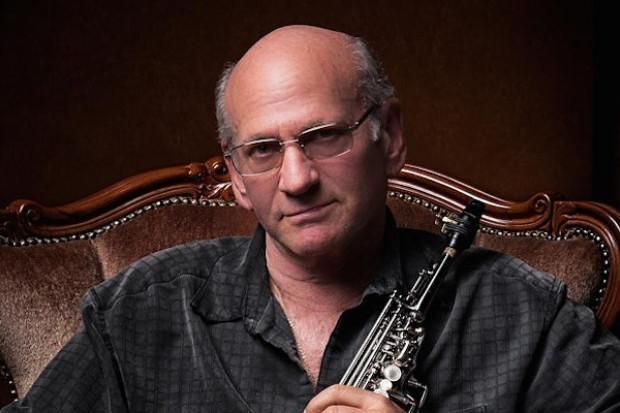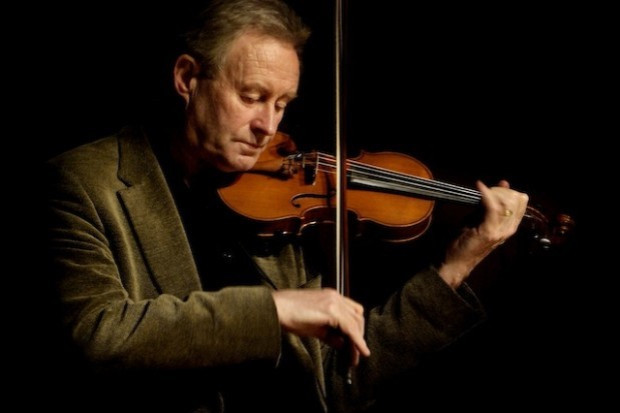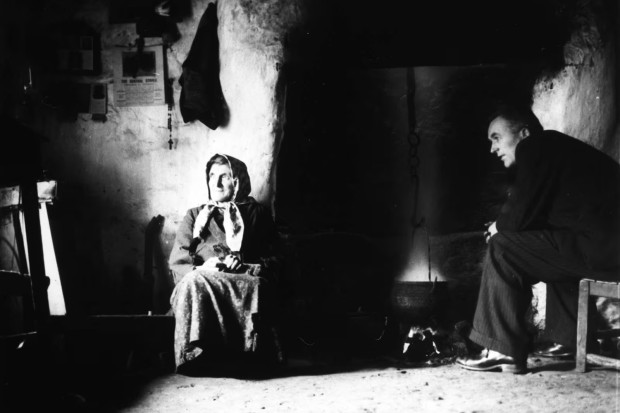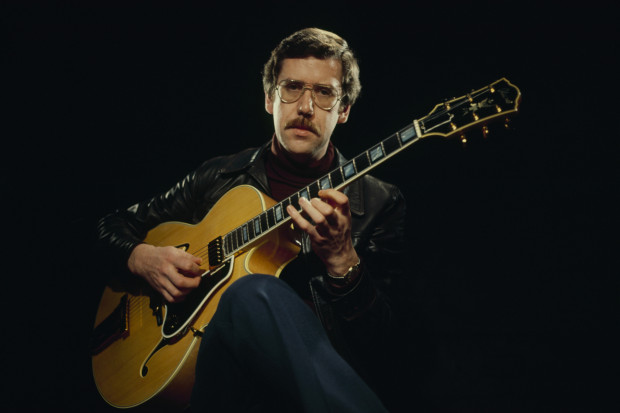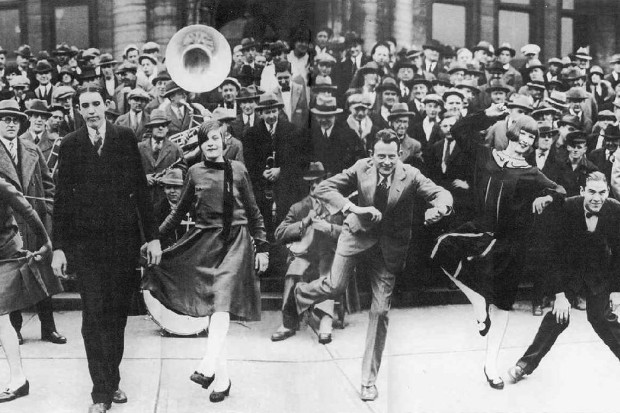
I Feel a Draught
Occasionally an artist emerges from the cultural landscape who embodies not just virtuosity and innovation but a historical impact that captures the imagination of an era. These men and women have style as well as vision, a way of presenting themselves to the world that is unique and forward-looking yet utterly of the time. In a modernist setting, they are typically outsiders. Self-conscious and ironic, they question authority as they pursue aesthetic goals that are often abstract, politically incendiary, and positioned as a spiritual antidote to the blandishments of consumerism. Picasso, Joyce, Hendrix. Sarah Bernhardt and Anna Pavlova, technical masters who move beyond technique and write, paint, or perform as if their very lives are bound up in their art, and whose art and image have influence across generations.
Jazz has more than its share of such figures. As an art form rooted in the African diaspora, which struggled for respect in an American culture dominated by Anglo-European models, it inevitably produced artists with an ambiguous relationship to the mainstream. Racism and state-enforced segregation encouraged jazz musicians to develop complex personae as a shield against discrimination. Early on, these masks were deferential. As the century progressed, the stance turned distant, existentialist, often angry. Charles Mingus’ jeremiads and Miles Davis’ habit of performing with his back to the audience are obvious examples of how talented black musicians wove art and life into subtle narratives of aesthetic sophistication and political rage.
We tend to associate this intensification of American black consciousness with the post-war dismantling of segregation and the rise of the civil rights movement. But long before the explosion of innovative expression in the sixties – Davis and John Coltrane, free jazz and the AACM – a tenor saxophonist from the swing era was laying the groundwork, musically and socially, for the revolution that was to come. His name was Lester Young, but he was universally known as ‘Pres’, short for ‘the President’.
This year is a double anniversary for Pres: a century since his birth in Woodville, Mississippi, and fifty years since his sad death in New York City in 1959. In between those dates Young led what was, in many respects, a life of paradox. Musical visionary and ensemble journeyman. Hipster icon and self-effacing pothead. Gentle friend and distant loner. The most influential instrumentalist in early jazz who, in his prime, never led his own band.
Pres was the essence of cool. Some claim he invented the word. He certainly embodied the concept. He wore Windsor suits and flecked blazers, skinny ties, long topcoats, and his trademark pork pie hat. He developed a private language, much of which entered the American lexicon: ‘that’s cool’, ‘you dig?’, ‘bread’ for money. When he sensed prejudice or hostility, he said, ‘I feel a draught’. He gave trumpeter Sweets Edison his apt nickname and christened Billie Holiday ‘Lady Day’. He also wore sunglasses in nightclubs and tilted his saxophone at a high angle, ‘like a canoeist about to plunge his paddle into the water’, as Whitney Balliett described it.
Pres’ heyday was the 1930s, when he played with the Count Basie Orchestra. Twenty years later, his style would come to define a whole social and artistic movement: the Beats in literature, the ‘birth of the cool’ in music, the rebel in film and social behaviour. But at the time his stance was as much defence mechanism as style statement. The argot, the shades, the eccentricities – all helped form a barrier between a sensitive, talented musician and a culture that insisted on seeing him as a freak. Draughted into the US Army in 1944, Young was diagnosed by military psychiatrists as ‘a constitutional psychopath’ and a misfit plagued by ‘drug addiction, alcoholism, and nomadism’. He spent a spirit-breaking year in a military prison.
Pres is recognised as the most important link between early and modern jazz. More than any other musician, he had a profound influence on the two main schools of post-war jazz: bebop and cool. Charlie Parker was an early disciple. Stan Getz and Lee Konitz memorised his solos. In a musical form characterised by improvisation, Pres was the improviser par excellence. He was consistently inventive during a conservative age and had one of the most swinging beats in the history of jazz. As Ethan Iverson has said, ‘Even his most frantic outbursts sound curiously relaxed. He never tried too hard or worked for the impossible. He just was: cool.’
Pres had universal qualities that became rare as jazz evolved into art music. Not just his swing, but his sense of melody. ‘He was a singer on his horn,’ Lee Konitz said. He loved Frank Sinatra. Constrained by 78-rpm records and the standards of pop music at the time, he was also economical, delivering in sixteen or thirty-two bars what later musicians could not achieve in much longer solos. And his improvisations often had the symmetry of the written. As Konitz said of Pres’ solos with Basie, ‘There’s not an incorrect or misplayed note, but somehow you know he’s making almost everything up.’ And here is Young’s biographer, Dave Gelly, on his famous break on the Basie tune ‘Taxi War Dance’: ‘The entire solo is thirty-two bars long; it takes exactly thirty-five seconds, and it’s a masterpiece to stand alongside Armstrong’s ‘West End Blues’ and Parker’s ‘Ko-Ko’. No one else could have done it because no else’s mind worked that way.’
But for all his importance, Young does not register much with today’s jazz listeners. Contemporary music consumers don’t have much patience with the poor sound quality of seventy-year-old recordings. Also, his finest playing was with Basie and Billie Holiday, when he was one of up to fourteen band members and not even the only tenor saxophonist. And the best stuff, on Columbia Records, remains out of print. Most of what is available is on Verve, post-1941 material that is interesting but often lacklustre. He never recovered from his horrific army experience and allowed his self-destructive habits to erode his art, though he is always worth listening to for the mystery and vulnerability of his playing.
The vulnerability is crucial to his iconic status. Listening to Lester Young’s music is essential for anyone who wants to understand the history of jazz, but it is the bruised-poet aura suffusing his music and personality that has the greater power. The link between suffering and its aesthetic expression is direct, intense and utterly authentic. And this is what makes his image more than just a persona. His figure defines cool but it is also an eloquent emblem of the human condition, tapping into the vulnerability that we all feel at various times in our lives.
The 1944 short film Jammin’ the Blues (available on YouTube) begins with the black-and-white image of the top of a pork pie hat wreathed in cigarette smoke, the camera gradually descending to reveal Pres’ face as he prepares to play his tenor sax. As he blows, the plaintive tone and simple phrases are a perfect expression of the romantic setting: the artist attempting to make sense of uncertainty without denying life’s sadness. It is a defining moment: the music and image coming together in sublime poignancy. As the writer Albert Murray puts it in his book Stomping the Blues, ‘In all of Lester Young’s finest solos there are overtones of unsentimental sadness that suggest he was never unmindful of human vulnerability.’
On occasion, Young’s impact has registered in the wider culture. The Bertrand Tavernier film Round Midnight, starring tenor saxophonist Dexter Gordon, was partly based on Young’s life. Joni Mitchell wrote lyrics to the Charles Mingus’ tribute to Pres, ‘Goodbye Pork Pie Hat’. But he remains too little known and too little listened to, and this double anniversary is a good time to seek out the work of an artist who in many ways defines a century.
To learn more about Lester Young, there is an excellent biography by Dave Gelly published in 2007 by Equinox Books. Young’s recordings from 1936–40 with the Basie Band are available in a limited edition box set for $68 from Mosaic Records. Online, Ethan Iverson’s blog Do The Math has a lively and technically informed series of essays on Pres which includes a great blindfold test with Lee Konitz (http://bit.ly/CWJG0).
Published on 1 December 2009
Kevin Stevens is is a Dublin-based novelist and writer on history, literature, and jazz.












